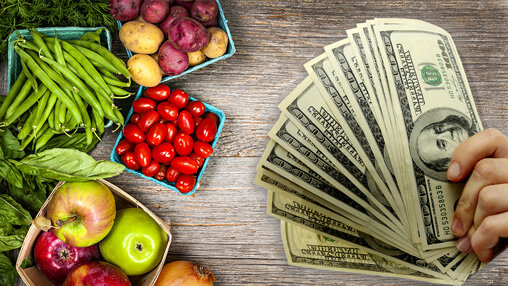Supplemental Nutrition Assistance Program (SNAP) is a federal aid program in the United States that provides financial assistance to eligible low-income individuals and families to purchase nutritious food. The program, formerly known as the Food Stamp Program, aims to alleviate hunger and improve the health and well-being of the less privileged sections of society.
SNAP is managed by the U.S. Department of Agriculture (USDA) under the Food and Nutrition Service (FNS). Specific departments of U.S. states distribute benefits, and every month, SNAP benefits are directly deposited into the household’s EBT card account, which can be used to pay for food at supermarkets, convenience stores, and other food retailers, including farmers’ markets.
To qualify for SNAP benefits, individuals and families must meet eligibility criteria based on several factors, including income, household size, assets, and expenses. The household’s gross monthly income must not exceed 130% of the poverty line, which is $1,778 monthly for a family of three. Households without elderly (age 60 or older) or disabled members must have assets of $2,500 or less, and households with such members must have assets of $3,750 or less. Adults between 18 and 59 years old must register for work, participate in the SNAP Employment and Training program if assigned by the state, accept offers of suitable work, and cannot quit a job.
The maximum monthly benefit for SNAP depends on the household size, with the highest benefit being $1,751 per month for a household of eight people.
In February 2024, SNAP benefits will be distributed on different dates depending on the state. For instance, Alaska’s SNAP program will distribute benefits on February 1, while Alabama’s will distribute benefits from February 4 to 23. However, some states, such as Alabama, Alaska, Florida, Georgia, Idaho, Iowa, Louisiana, Mississippi, Nebraska, Oklahoma, South Carolina, South Dakota, Texas, Vermont, and Wyoming, have chosen to refrain from participating in the SNAP program for 2024.
You must go through your state’s SNAP agency to apply for SNAP benefits. Before using, it’s essential to determine whether you meet the eligibility criteria for SNAP. You can find your state’s application by visiting the U.S. Department of Agriculture’s (USDA) SNAP website. The SNAP application form asks for various information, including personal identification, household composition, income, resource, and expense details.
After submitting your application, a SNAP caseworker will contact you to schedule an interview. During the interview, you’ll be asked to verify the information on your application and provide any required documentation. To support the information in your application, you must provide documentation, including proof of identity, social security numbers for all household members, proof of income, bank statements, rent or mortgage statements, utility bills, and medical bills for elderly or disabled members.
READ ALSO: Who Qualifies For The $500 Boost In Climate Action Incentive Carbon Tax Rebate In February?

















































